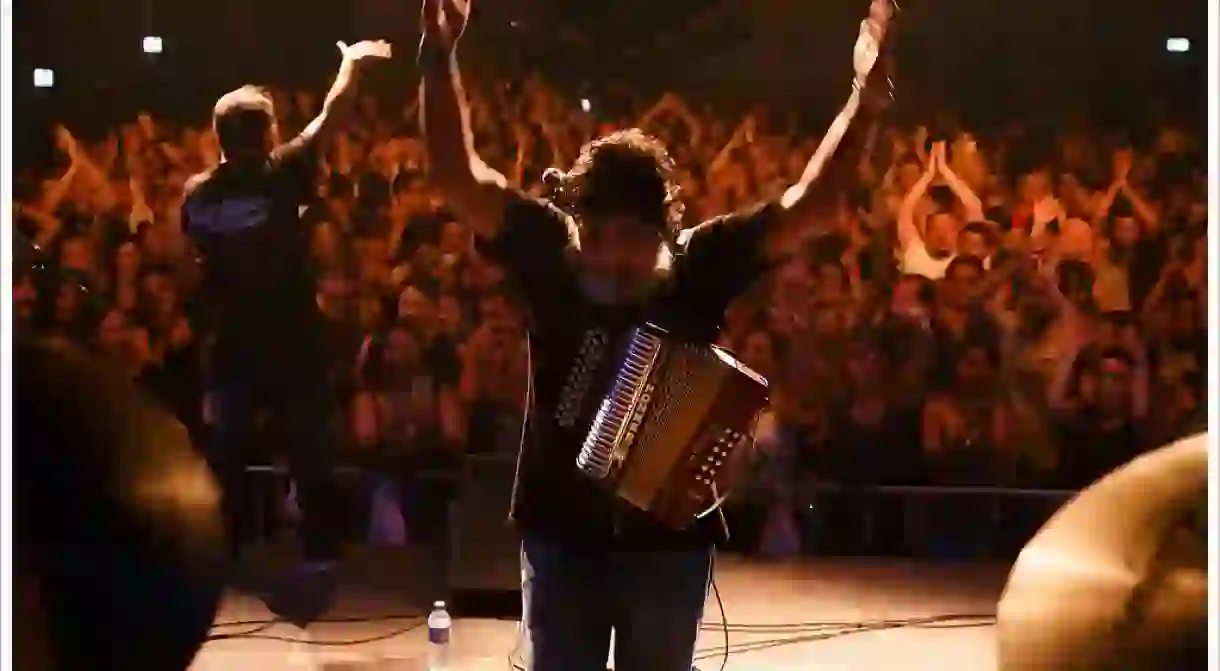The Many Faces of Cumbia in Argentina

The Latin American beats of cumbia are taking the world by storm – Shakira’s songs have people shaking their hips, and even Justin Bieber’s cumbia-inspired hit Despacito was the song of the summer. So what about cumbia in Argentina? Let’s have a look at some of the different styles around.
Cumbia clasica
Cumbia itself is a heady blend of Latin rhythms mixed with African, Caribbean, indigenous and European influences. It started on the Colombian coast and made its way through the continent, manifesting itself in Argentina in the 1950s, where it went on to mutate into various guises over the coming decades. Cumbia clasica is the original sound which everything else was born out of, and remains as ubiquitous today as it was 40 years ago.
Check out Argentine cumbia superstar Gilda for a taste of the real deal.

Cumbia Santafesina
A local product from the city of Santa Fe, cumbia Santafesina is heavily influenced by Colombian cumbia and uses either a guitar or an accordion as its main instrument. It was popularised in the 1970s and the songs are often cheesily romantic, something which distinguishes it from other Argentine strains of the music, possibly owing to its Colombian roots.
Check out the musical styling of Los del Fuego for a real sense of the Santafesina scene.
Cumbia Norteña
Cumbia Norteña, as the name would suggest, comes from the north of Argentina in the provinces of Salta, Jujuy and Catamarca. This is the most indigenous region in the country, and cumbia Norteña fuses traditional cumbia beats with Andean rhythms and native folklore music. Instruments such as the synthesized bandoneón, or concertina, are used, and much of the music was influenced by Peruvian cumbia of the 1960s and 70s.
Have a listen to Norteña Koli Arce to find out what it’s about.

Cumbia villera
Cumbia villera originated in the slums, or “villas”, of Buenos Aires and exploded after the country’s economic crisis in 2001. With odes to misery, poverty and lower class activities such as football and football hooliganism, cumbia villera became popular with the lower classes but began to spread over Latin America to be enjoyed by many different strata of society. Using a lot of synths and electronic equipment, cumbia villera is Argentina’s version of gangster rap.
Bow down to Damas Gratis, the kings of cumbia villera.
Cumbia romantica
Lock up your daughters, as cumbia romantica makes guys and girls weak at the knees. Serenades and love songs are the order of the day when it comes to cumbia villera, and it is closely linked to cumbia Santafesina due to its drippy lyrics, again inspired by cumbia from the Colombian motherland.
Leo Mattioli is the go-to guy for all your cumbia romantica needs. Oh my.
Cumbia experimental & digital
A more modern take on the genre, cumbia digital originated in Buenos Aires in the mid-2000s, when Argentines began to celebrate their cumbian roots, but in a more contemporary way. Mixing cumbian beats and rhythms with house and other electronic music, and new sound was born, and this was pioneered by the innovative Cumbia Electronica music label ZZK Records.
Check out their Spotify playlist here for some of the genre’s best and brightest, including some stellar tracks from the label and their artists.

Cumbia Cuarteto
Hailing from Argentina’s second city, Cordoba, cumbia Cuarteto borrows heavily from Italian and Spanish dance rhythms, and is a celebration of Cordobese culture, its popularity rising largely in part from wanting Cordoba to develop its own musical identity.
Look no further than La Mona Jimenez, king of all things Cuarteto.
And finally…
For the full rundown on almost every single style of cumbia, from Colombia to Ushuaia, go on one of ZZK Record’s tailor-made cumbia tours. These guys are the experts, and your thirst for cumbia will be well and truly satisfied after a night out with these guys. Check out their site here for more info.













